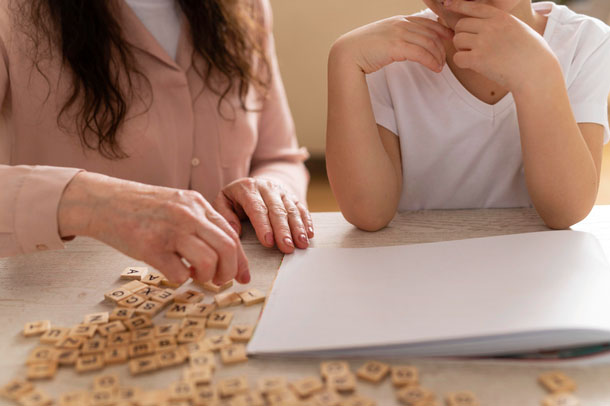Proper posture is often associated with physical health, but its significance goes beyond aesthetics. For children with autism, maintaining correct posture can play a crucial role in enhancing sensory processing and overall well-being.
Understanding the connection between posture and sensory processing can help parents, caregivers, and educators create supportive environments that promote optimal development for these children.
The Relationship Between Correct Posture and Sensory Processing in Children with Autism
Children with autism often experience sensory processing issues, affecting how they perceive and respond to sensory stimuli in their environment. Sensory processing refers to the brain’s ability to organize and interpret information from our senses (sight, sound, touch, taste, and smell) and respond appropriately.

For children with autism, this process can be disrupted, leading to sensory overload or sensory-seeking behaviors.
Proper posture is the foundation for efficient sensory processing. When a child’s body is aligned correctly, their nervous system can better regulate sensory input, improving focus, attention, and self-regulation. Good posture allows the body to receive and process sensory information more effectively, reducing the likelihood of sensory overload and meltdowns.
Enhancing Sensory Integration Through Correct Posture
Sensory integration is the ability to combine sensory information from different sources and produce an appropriate response. Children with autism often struggle with sensory integration, making it challenging for them to navigate daily activities.
However, maintaining correct posture can help facilitate sensory integration in the following ways:
1. Proprioceptive Feedback: Correct posture provides proprioceptive input, which refers to the body’s awareness of its position in space. This feedback helps children with autism develop a better sense of their body’s movements, leading to improved coordination and motor skills.
2. Calming Effect: Adopting proper posture can have a calming effect on children with sensory sensitivities. When their body feels stable and secure, they are less likely to experience anxiety or stress in overwhelming sensory environments.
3. Focus and Attention: With better sensory integration, children with autism can focus their attention on tasks and activities for more extended periods. This improved focus allows for better participation in learning and social interactions.

Importance of Early Intervention and Support
Early Intervention and Support for children with autism and sensory processing issues play a pivotal role in shaping their developmental trajectory and improving their overall quality of life. Recognizing and addressing these challenges at an early age not only facilitates better outcomes but also empowers families and communities to provide effective support systems.
Studies have consistently demonstrated that early intervention can significantly enhance a child’s cognitive, social, and communication skills. By identifying sensory processing issues in the early stages of development, healthcare professionals, educators, and caregivers can tailor interventions to the specific needs of each child.
This targeted approach ensures that children receive the necessary support to navigate sensory stimuli and develop adaptive strategies to manage their unique challenges.
Early intervention also fosters a collaborative approach, encouraging open communication and knowledge-sharing among parents, caregivers, and specialized professionals. By building a comprehensive support network, families can access valuable resources and guidance to better understand their child’s sensory processing issues.
Moreover, this collaborative effort enables the development of personalized intervention plans that address the child’s individual needs, preferences, and strengths, promoting a more holistic and effective approach to their care.
Beyond the immediate benefits to the child, early intervention and support foster a nurturing environment that promotes the child’s emotional well-being and self-esteem.
By acknowledging and addressing sensory processing challenges early on, children are less likely to experience feelings of isolation or frustration, enabling them to develop a stronger sense of self-confidence and resilience.
Furthermore, early intervention empowers families to become advocates for their children, fostering a sense of empowerment and resilience within the community.
By promoting awareness and understanding of sensory processing issues, families and communities can create inclusive environments that accommodate the unique needs of children with autism, fostering a more compassionate and supportive society for all individuals.
Physical Benefits of Correct Posture for Children with Autism
Besides the sensory advantages, correct posture also offers several physical benefits that contribute to overall well-being for children with autism:
1. Musculoskeletal Health: Maintaining good posture helps support the spine and skeletal structure, reducing the risk of musculoskeletal issues such as back pain and poor bone alignment.
2. Breathing and Digestion: Proper posture allows for optimal lung expansion and better breathing patterns. Additionally, it aids in maintaining a healthy alignment of organs, which can positively impact digestion.
3. Confidence and Social Interaction: Children with autism may face challenges in social interactions due to difficulties in reading nonverbal cues. Improved posture can boost self-confidence and help them present themselves more positively, making social interactions more comfortable and successful.
Conclusion
Understanding the importance of correct posture for children with autism goes beyond the physical aspect. It directly influences their sensory processing abilities and overall well-being. By promoting good posture, we can create supportive environments that enhance sensory integration, focus, and attention, improving participation in various activities and social interactions.
Parents, caregivers, and educators play a vital role in encouraging and reinforcing correct posture, which can significantly contribute to the overall development and happiness of children with autism.







